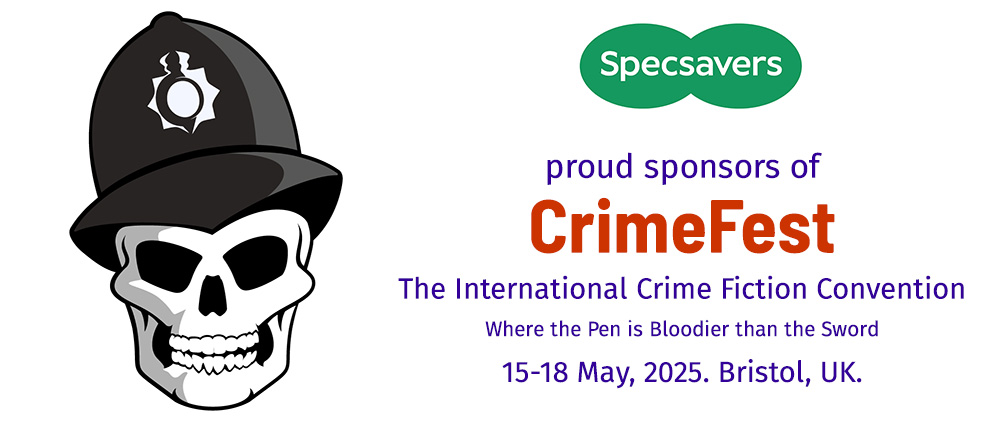as selected by H.R.F. Keating and Mike Ripley
1 – 10 11 – 20 21 – 30 31 – 40 41 – 50 51 – 60 61 – 70 71 – 80 81 – 90 91 – 100
Adrian Muller writes: In the late 1990s I approached the Crime Writers’ Association (CWA) with the suggestion of trying to replicate Dutch arts and current affairs magazine’s Vrij Nederland’s annual Crime & Thriller Guide. Each year it lists every in-print crime and thriller book available in the Netherlands. Crime writer Natasha ‘N.J.’ Cooper, a friend and fellow CWA board-member (and later Chair) took the idea to a contact at The Times. Listing every available crime title proved too ambitious, but for three years the newspaper published a crime supplement, and I am proud to have been its freelance commissioning editor. For the last edition, in September 2000, it was my great pleasure to ask two of the most knowledgeable authors of the genre – H.R.F. ‘Harry’ Keating and Mike Ripley – to put together a list of the hundred best crime titles of the previous century. Initially the idea was that one title for each year would be chosen. However, too many important titles would have been left out so, instead, they went for the best.
Sheila Keating, Harry’s widow, and Mike Ripley have kindly given permission for the list to be put up on the CRIMEFEST website.
Sheila, also known as actress Sheila Mitchell, has recently written H.R.F. Keating: A Life of Crime, a biography of her multi-talented husband. Not only was Harry a crime writer, he was also a journalist and reviewer, and wrote many books about crime fiction. CRIMEFEST’s award for best publication about crime fiction or genre related (auto)biography is named after Harry.
As mentioned above, Mike Ripley is one of the most knowledgeable people about crime fiction. His monthly column, reviews and book about golden age thrillers (Kiss Kiss, Bang Bang) are ample proof of that. He is also the award-winning writer of the ‘Angel’ crime novels, and the ‘continuation’ author of Margery Allingham’s classic Albert Campion series. The most recent, Mr Campion’s Séance, is published in June.
Please note that some of the books are included for free in Amazon’s Kindle Unlimited deal. A free trial may be available.
When known – and available – links to drama adaptations on DVD are listed. Please note that UK DVDs will only work on European players and US DVDs will only work on American players, but both will work on region-free players.
100 BEST CRIME NOVELS OF THE 20TH CENTURY
Judges finally agree on the 100 murders most foul
Mike Ripley:
Half the fun of reading a recommended list of books is arguing about the ones that are missing. The worst thing about compiling such a list is having to decide what to leave out, because what ever it is, it is almost certainly one of my personal favourites.
But our target was 100 titles and we have tried to give a cross-section of crime-writing over the century – a century that saw perhaps 50,000 crime novels published in this country. So, in fact, we have listed only 0.2 per cent of the books we could have chosen, but every aspect of crime-writing is there.
You will find classic murder stories, irritatingly devious whodunnits, gripping thrillers, down-to-earth and superhero spies, policemen in all shapes and sizes, private detectives in even more varied hue, crimes committed in many different countries and as far back as the 12th century.
The authors listed here are a rum lot, too. One went down on the Titanic, one lived in hotel rooms for 25 years, drinking himself to death. One was, and two are, members of the House of Lords. At least three have worked for the intelligence services and at least two have criminal records that we know about. A handful of authors get more than one mention, but all of them have written more than one good book, so my advice is to start with these, then read their other titles, then read everybody who is not on the list. You will find something to intrigue, mystify, scare, thrill or amuse you. I guarantee it.
Any list of crime fiction that starts with the return of Sherlock Holmes and ends with the death of Inspector Morse must be taken seriously. Yet there is one important omission, which must be rectified right here and now.
The missing title is The Perfect Murder from 1964, which introduced the gentle Indian detective Inspector Ghote and was written by a man who had been nowhere near India at the time, my co-conspirator on this list: Harry Keating.
H.R.F. Keating:
NEVER say you’ll choose the hundred best of anything. And never say you’ll choose them in collaboration. It can’t be done. One author’s work may be overflowing with one sort of virtue, or two or three, but another will have two or three different virtues. But one thinks one knows what’s a good book, and wants to tell everybody.
I suppose my first virtue would be good writing. What’s that you ask. Producing portraits of people that ring true is part of it, together with stringing words together so that they don’t jar and then making them fire up pictures in reader’s mind that will stay there. Then look for a good mystery: it doesn’t have to be a whodunnit mystery. The best crime books tell us something about the great mystery of human life. More than one Mike Ripley pointed in a different direction from me. Sometimes it wasn’t hard to find a compromise, and sometimes it was. But heat was avoided. How? By a simple system of swapping. If my best goes on, I’ll let your best enter, even though… If you’ll drop that terrible book, I’ll allow that fine book, which seems to irritate you in some way, to slide gently into oblivion.
So if, casting your eye down our final 100 titles, you find that the eyebrow above is shooting upwards in dismay at some omission, put it down to human error, multiplied by two. We would have liked to name 200 books, even 1,000. But we couldn’t. So it’s ‘E&OE’ – errors and omissions excepted.
Support your local independent bookstore: UK/Hive or USA.
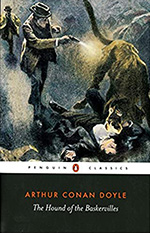
1
1902 – The Hound of the Baskervilles by Sir Arthur Conan Doyle. A wonderful Sherlock Holmes story from its sparkling first pages, through its vivid painting of darkest Dartmoor, its undertones of fear of the mind’s depths, and on to the triumph of the rational.
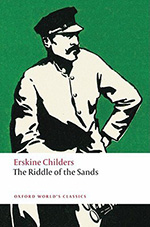
2
1903 – The Riddle of the Sands by Erskine Childers. The first espionage story, which can claim to being literature, this is a tale of sailing and spying adventure off the German coast, with an ominous warning of war to come. Perhaps the best such ever.
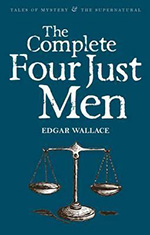
3
1905 – The Four Just Men by Edgar Wallace. Wallace’s first crime story was a financial disaster. Published at his own expense, it failed to reveal how the Four Just Men had killed the Foreign Secretary. Wallace offered a prize of £500 for the correct solution and unfortunately, he received far too many! By the 1920s, though, one in every four books sold was said to be a Wallace.
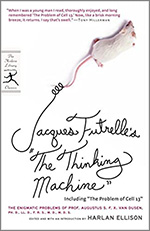
4
1907 – The Thinking Machine by Jacques Futrelle. Short stories about an American genius, S.F.X. Van Dusen, known as the Thinking Machine, tiny in body, huge in head, comparing well as a creation with Chesterton’s Father Brown. ‘The Problem of Cell 13’, an escape challenge, is a classic of ingenuity.
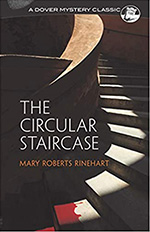
5
1908 – The Circular Staircase by Mary Roberts Rinehart. “This is the story of how a middle-aged spinster lost her mind,” the book begins. A lonely house, foolhardy climbing of a spiral stair, all the shivers of ‘Had I But Known’. But, more, a fine symbolic exploration of all our minds.
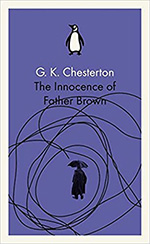
6
1911 – The Innocence of Father Brown by G.K. Chesterton. Eight stories about one of the really great detectives, the bumbling dumpling of a Catholic priest with the harmless name. And the ability, by turning the facts on their head, to show the truth of a crime and of a human failing.
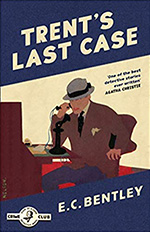
7
1912 – Trent’s Last Case by E. C. Bentley. Frivolity enters the world of the detective story and will stay on past Lord Peter Wimsey till the crime writers of today, and so will Bentley’s touches of savage social criticism. Millionaires are due for a bad time.
[Visit the HarperCollins website for more titles in their Detective Club Crime Classics.]
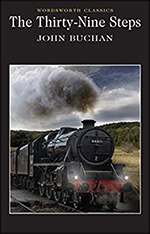
8
1915 – The Thirty-Nine Steps by John Buchan. For years afterwards, the word ‘Buchanesque’ came to mean any tale of high adventure where the hero kept his up per lip stiff. The Thirty-Nine Steps was right on the button in terms of popular fears and attitudes when it was published, though many of those attitudes would be distinctly non-PC today.
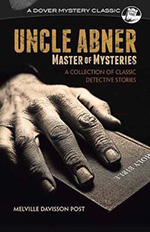
9
1918 – Uncle Abner by Melville Davisson Post. Eighteen linked stories about an early 19th-century Virginia backwoodsman and formidably God-fearing sleuth, gifted too with great powers of observation. Together they produce tales of thunderous weight such as ‘The Doomsdorf Mystery’, a beauty of a locked-room puzzle.
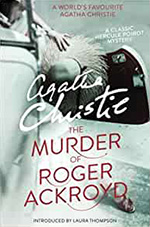
10
1926 – The Murder of Roger Ackroyd by Agatha Christie. “Foul,” they cried when this hit the lending-library shelves. Legitimate, said rival author Dorothy L. Sayers. “Wonderful cunning,” almost every crime critic has said since.
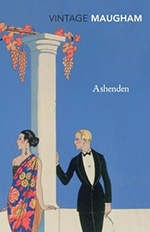
11
1928 – Ashenden (aka The British Agent) by W. Somerset Maugham. The first spy story written by someone who had been there and done that. (Maugham was a former intelligence officer.) A humane and compassionate antidote to two fisted, square-jawed heroes battling dastardly foreigners. The head of British Intelligence is known only as ‘R’, anticipating James Bond’s ‘M’ by a quarter of a century.

12
1929 – Little Caesar by W.R. Burnett. The rise and fall of Chicago gangster Cesare Bandello, made famous by his dying words: “Mother of God, is this the end of Rico?” At the time it was written, Al Capone’s mob really did control Chicago and shootings, drug-pushing and bootlegging were harsh facts of life.
[The classic film version stars Edward G. Robinson: UK / US.]
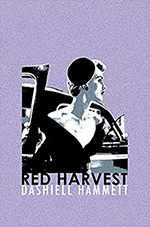
13
1929 – Red Harvest by Dashiell Hammett. First novel by ex-Pinkerton operative and pulp-magazine writer lifting the lid off Prohibition America’s violent downside, all without glorying in the mayhem or writing in any way crudely. Twenty-five deaths described, more off-stage. That’s life.
[Hammett’s plot was also the source material for Akira Kurosawa’s Yoyimbo [UK / US]; Sergio Leone’s A Fistful of Dollars [UK / US]; and the Walter Hill’s Last Man Standing [UK / US.]
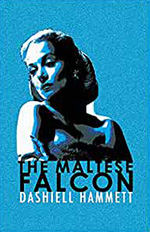
14
1930 – The Maltese Falcon by Dashiell Hammett. It is almost impossible to mention The Maltese Falcon without thinking of the Humphrey Bogart film, but the film is remarkably faithful to the book. Set the standard for tough-talking private-eye stories and its influence can still be seen in print—and in Hollywood—today.
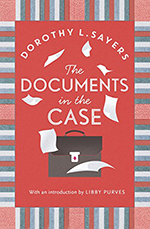
15
1930 – The Documents in the Case by Dorothy L. Sayers. What, no Lord Peter Wimsey? No, but a wonderfully well-written book, replete with well observed characters (mostly writing letters to and fro). A teaser of a mystery which, best of all, in being solved suggests an answer to an old philosophical riddle.
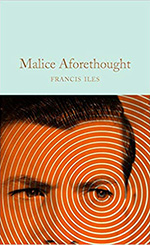
16
1931 – Malice Aforethought by Francis Iles [aka Anthony Berkley]. A milestone in crime writing, where the murderer is revealed in the first paragraph. But does he get away with it? Revolutionary in its day, still gripping 70 years on.
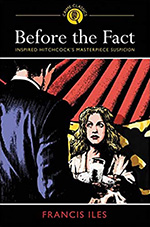
17
1932 – Before the Fact by Francis Iles [aka Anthony Berkley]. Subtitled “A murder story for ladies”, it is in fact a murder story from the point of view of the victim. A lonely, insecure wife knows her husband is out to kill her…and she lets him!
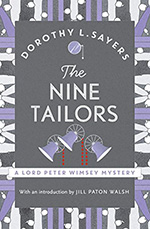
18
1933 – The Nine Tailors by Dorothy L. Sayers. Lord Peter Wimsey rings the (church) bell, and through him his creator hymns the old, traditional England, the bleak East Anglian countryside of her childhood and her beloved vicar father.
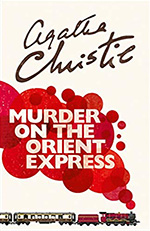
19
1934 – Murder on the Orient Express by Agatha Christie. The ultimate closed-circle-of-suspects whodunnit set on the famous, snowbound train divided the critics: Dorothy Sayers called it a classic, Raymond Chandler said: “Only a half-wit could have guessed it.”
[Take your pick, the 1974 edition with Albert Finney: UK / US; or the 2017 Kenneth Branagh version: UK / US.]
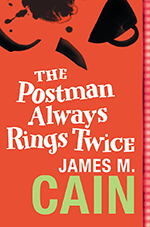
20
1934 – The Postman Always Rings Twice by James M. Cain. “Brutal, shocking, strong meat,” was how the critics greeted Cain’s classic tale of the young drifter, the passionate wife and the doomed husband. A short, powerful masterpiece of lust and murder among Californian lowlife.
[Also a classic film noir with John Garfield and Lana Turner: UK / US.]
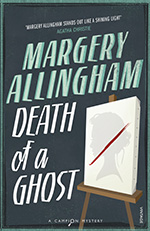
21
1934 – Death of a Ghost by Margery Allingham. A mystery story from a writer who wore great big romantic boots and could stride safely in them. A portrait of the 1930s artist’s world and a how-did-he-do-it to test any reader’s wits.
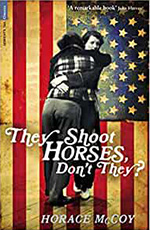
22
1935 – They Shoot Horses, Don’t They? by Horace McCoy. A reverse murder story which starts with a judge handing down a death sentence; but who was murdered and why? Set against a marathon dance competition in Depression America and a compelling indictment of the failure of the American Dream.
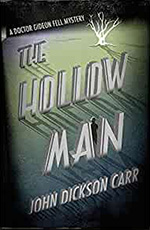
23
1935 – The Hollow Man by John Dickson Carr. Classic example of the locked-room, mystery, even including a shameless diversion in the form of a lecture on the ever-intriguing ‘hermetically sealed chamber’ delivered in the booming tones of Dr Gideon Fell.
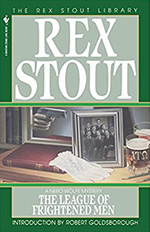
24
1935 – The League of Frightened Men by Rex Stout. Perhaps the best of the 40-odd books featuring Nero Wolfe, Great Detective (and knowing it) with archetypal sidekick Archie Goodwin ever at hand to do the fat man’s legwork.
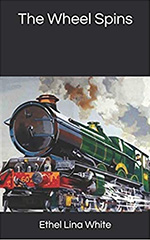
25
1936 – The Wheel Spins by Ethel Lina White. Much better known by the film title The Lady Vanishes. But, though the mystery of the elderly lady who disappears on the non-stop train is intriguing, at the core are the novelist’s unobtrusively perceptive reflections on chance and its effects.
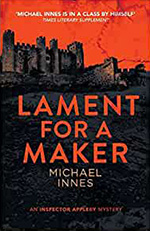
26
1938 – Lament For A Maker by Michael Innes. A Scottish castle on a wild winter night and a body plunges from the battlements. Suicide, murder or a sinister curse on the mad Laird of the Manor’s family? Written from several viewpoints and crammed with literary jokes by one of Britain’s most intelligent and prolific writers.
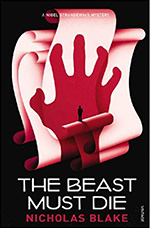
27
1938 – The Beast Must Die by Nicholas Blake. Aka poet Cecil Day-Lewis who, when his son was all but run over, conceived this ‘I’ll get him’ story. Fine idea, then seriousness shouldered its way into the detective story, So, 60 years on, here’s a worthwhile read.
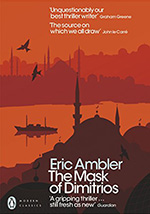
28
1939 – The Mask of Dimitrios by Eric Ambler. The world seen from the Left suddenly appeared on the espionage scene in Ambler’s pre-1940 novels—in this, the best of them, with a credibly ‘innocent abroad’ hero. Marvellous characters, marvellous writing.
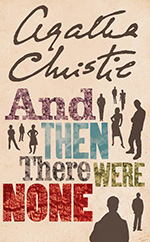
29
1939 – And Then There Were None by Agatha Christie. [First published as Ten Little Niggers; then as Ten Little Indians before the current title.] Or vary the nursery rhyme title a dozen ways, as you will. But ‘who’s to be left?’ is still a 100 per cent intriguing idea. And there are more pleasures in Dame Agatha’s perceptive portraits of all ten potential victims.
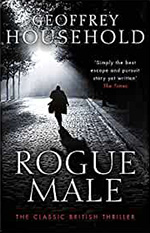
30
1939 – Rogue Male [aka Man Hunt] by Geoffrey Household. Published only weeks before the outbreak of the Second World War, a tense, taut thriller where a big-game hunter is himself hunted by the secret police of a well-known (but unnamed) European dictator.
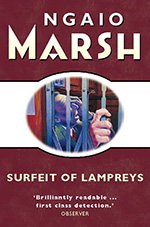
31
1940 – A Surfeit of Lampreys [aka Death of a Peer] by Ngaio Marsh. Innocent, wondering New Zealand girl looks on while murder happens, among a wonderfully barmy aristocratic-ish British family. She loves them; readers do, too.
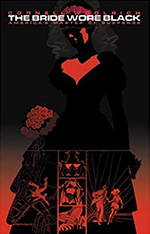
32
1940 – The Bride Wore Black by Cornell Woolrich. A coldblooded murder spree by a bride whose husband is murdered on their wedding day. Almost an everyday occasion in the Gothic world of Woolrich who described his writing philosophy as “First you dream, then you die”.
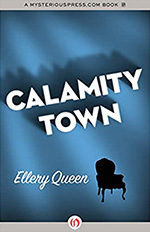
33
1942 – Calamity Town by Ellery Queen. One of America’s tributes to the British detective story, but after brilliantly playing the puzzle game since 1928 the two cousins who wrote under this name wanted to do something more as well, to produce a true portrait of small-town life. They did.
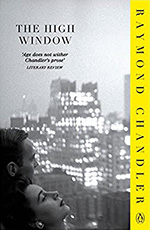
34
1943 – The High Window by Raymond Chandler. The Southern California of rich and nasty people and poor and nasty people with Philip Marlowe, “neither tarnished nor afraid”, as his creator said, not just solving a mystery but showing us a society in a memorable way.
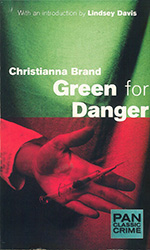
35
1944 – Green For Danger by Christianna Brand. Perhaps the final crowning glory of the Golden Age detective story. Intricate plot, cunning telling, nostalgic wartime setting, champagne vivacity and real feeling for the characters.
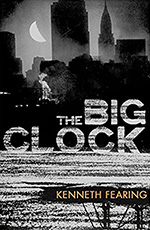
36
1946 – The Big Clock by Kenneth Fearing. George Stroud is having an affair with his media mogul boss’s mistress and was the last person to see her alive other than her murderer. Then he is assigned to track down the last person to see her and has to conduct a ruthless against-the clock search for himself! A forgotten masterpiece, filmed twice, originally with Charles Laughton and Ray Milland [UK / US]; and later as No Way Out with Kevin Costner and Gene Hackman [UK / US].
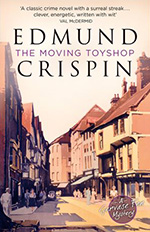
37
1946 – The Moving Toyshop by Edmund Crispin. From the opening gunshot fired by a foot loose poet, we are in jokey academia with one of the best guides we could have. A clever, funny and rightly famous story set in Oxford 30 years before Morse started pounding the beat.
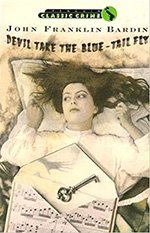
38
1948 – Devil Take the Blue-Tail Fly by John Franklin Bardin. Into the hidden depths of the mind as concert harpsichordist Ellen finds herself taken over by wicked “Nelle” to the point where she kills her husband. In tense, gripping and new ground.
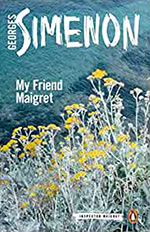
39
1949 – My Friend Maigret [aka The Methods of Mairgret] by Georges Simenon. The ever probing Paris policeman (or is he the ever understanding novelist?) goes to the Mediterranean isle of Porquerolles accompanied by Scotland Yard’s Inspector Pryke. And we learn how the French detective unravels human motives.
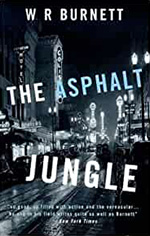
40
1949 – The Asphalt Jungle by W.R. Burnett. The first ‘caper’ novel, a detailed account of a heist at Chicago’s lushest jewellers. Wonderfully well written in forward-moving English prose.
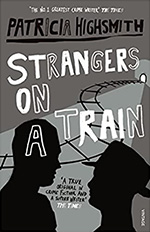
41
1950 – Strangers On A Train by Patricia Highsmith. Travelling across America by train, you meet a complete stranger and begin to swap stories. You have a wife who won’t divorce you, he has a father he hates. The stranger comes up with the answer: swap murders, so that no one will ever suspect. Made into a famous film by Hitchcock [UK / US].
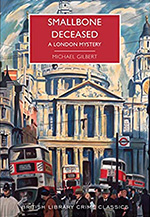
42
1950 – Smallbone Deceased by Michael Gilbert. The legal mystery at its finest, with a complex plot, beautifully dovetailed, and odd scenes of delightful humour. Plus classical English prose of a high order.
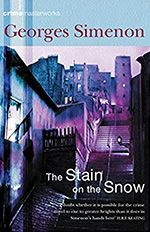
43
1950 – The Stain on the Snow by Simenon. Apart from the Maigret stories, there are the ‘hard’ Simenons, of which perhaps this is the finest. Murder of the Occupiers, and others, in wartime France, a world without morality icily exposed in wonderfully evocative, economical writing.
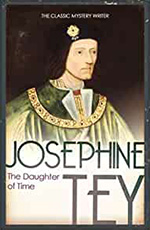
44
1951 – The Daughter of Time by Josephine Tey. The title means ‘Truth’ and the book shows Tey’s Inspector Grant, hospitalised, finding out the truth of who killed the Princes in the Tower, eventually absolving Richard III.
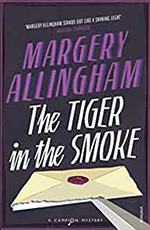
45
1952 – The Tiger in the Smoke by Margery Allingham. Post-war London, wrapped in “a saffron blanket” of fog, where the hunt is on for escaped prisoner Jack Havoc. Suspense at its peak. And another hunt: for Good in the midst of Evil with time there, too, running out.
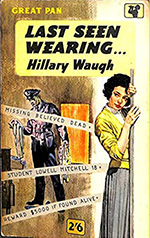
46
1952 – Last Seen Wearing by Hilary Waugh. American mystery writer Waugh picked up a ‘true crime’ potboiler and was struck by its flat, detail-crammed writing. Could he use it? He could and the definitive police procedural was born.
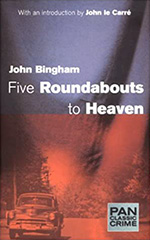
47
1953 – Five Roundabouts to Heaven by John Bingham. Crime fiction where justice is not necessarily done and people are swayed this way and that by awkward little facts and grabbing opportunism. A would-be murderer races past five roundabouts to unset the trap he’s fixed for his wife, and…
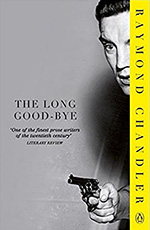
48
1953 – The Long Goodbye by Raymond Chandler. Regarded by many as the best Philip Marlowe story. Holes have been picked in the plot, but without doubt Chandler was writing at the height of his powers.
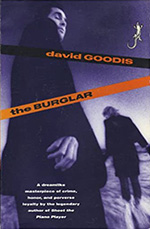
49
1953 – The Burglar by David Goodis. Harbin is a professional burglar, always careful, always unarmed, fitting perfectly into the Philadelphia underworld. Then he meets Della, a femme fatale – quite literally for Harbin. Goodis was one of the poets of the bleak, depressing noir school of writing. Much admired in France even when forgotten in his native America.
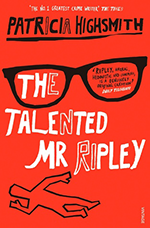
50
1956 – The Talented Mr Ripley by Patricia Highsmith. Tom Ripley is the sort of double murderer it’s hard not to take a shine to, not only full of real charm but also in Highsmith’s word of praise “a free spirit”. So you want him to get away with it—and he does.
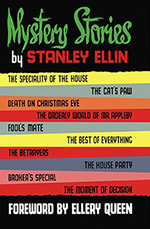
51
1956 – Mystery Stories [aka Quiet Horror] by Stanley Ellin. A top-rank short story writer and these ten tales show Ellin at his concentrated best—a long way from “great overblown kapok-stuffed” novels (Ellin’s cheeky words). The Speciality of the House is an all-time classic.
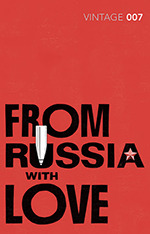
52
1957 – From Russia With Love by Ian Fleming. James Bond is probably the ultimate brand name in thriller fiction and this, his sixth outing, has all the famous trademarks: exotic locations, including the Orient Express, sex and ruthless baddies.
[The second of the James Bond films to star Sean Connery: UK / US.]
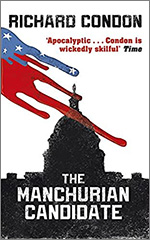
53
1959 – The Manchurian Candidate by Richard Condon. A former prisoner-of-war in Korea returns to America having been brainwashed by his captors as a political assassin to be triggered by remote control. Condon was to explore the same themes of political conspiracy, thinly disguised as the Kennedy assassination, in his later controversial black comedy Winter Kills.
[See the chilling 1962 adaptation starring Frank Sinatra: UK / US.]
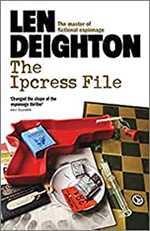
54
1962 – The Ipcress File by Len Deighton. The perfect answer to James Bond, the anonymous, insubordinate, working-class spy who survives on his wits to uncover the traitor at the heart of British intelligence. Stuffed with enough fake spycraft to make you think you are breaking the Official Secrets Act by reading it, as well as wry observations, good jokes and a hip, trendy style just right for the Swinging Sixties.
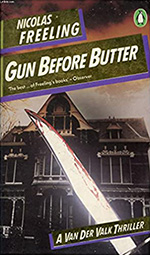
55
1963 – Gun Before Butter by Nicholas Freeling. Dutch detective Inspector van der Valk, balefully eyeing his superior, “self-important as an advertising agency”, deals with Amsterdam crime, meditates about it, and conveys many of his creator’s own vigorous opinions and sympathies.
[Following in Barry Foster’s [UK] footsteps as van der Valk is a new television series with Marc Warren [UK].]
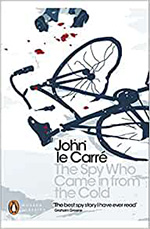
56
1963 – The Spy Who Came in from the Cold by John Le Carré. The best thriller of the Cold War, A riveting story of double and triple-cross which climaxes on the Berlin Wall and poignantly seals the fate of the doomed agent Alec Leamas. A masterly performance.
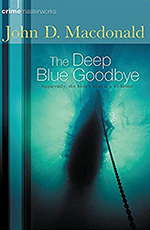
57
1964 – The Deep Blue Goodbye by John D. MacDonald. The start of a series featuring Travis McGee, a footloose detective specialising in reclaiming lost objects and people from his Florida houseboat base. The series ran for 21 books which can be read as a critical history of both Florida and changing American values and morals.
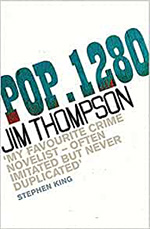
58
1964 – Pop. 1280 by Jim Thompson. A tiny, corrupt American town and a look at life stripped of the frills. Humour from scatological to just plain yukky, but told with saving vigour and a touch of questioning about how, except by joking, “can you bear up under the unbearable”?
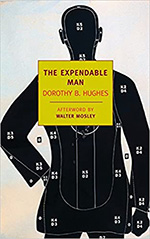
59
1964 – The Expendable Man by Dorothy B. Hughes. One of the great trick novels of the genre. A successful Los Angeles intern in the 1960s drives his Caddy to Phoenix, and, when a girl is found dead, gets arrested by some brutally macho policemen. Wonderfully, cleverly concealed clues, and fine writing.
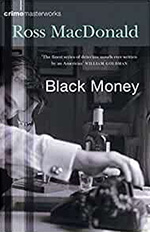
60
1965 – Black Money by Ross MacDonald. MacDonald’s California-based private eye Lew Archer, in a long-running series of novels starting in 1949, has been hailed as the logical successor to Philip Marlowe. But where Marlowe was a catalyst, sparking the action by his very presence, Archer is much more a listener – almost a private eye with a psychiatrist’s diploma, in fact.
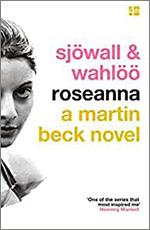
61
1967 – Roseanna by Maj Sjöwall and Per Wahlöö. By the late 1960s crime fiction had become capable of doing almost all the novel could do. The culmination of this shift were ten books by this Swedish pair planned as an assault on the ills of Western society, of which this was the first.
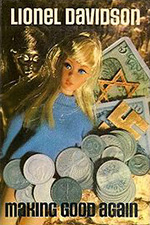
62
1968 – Making Good Again by Lionel Davidson. The tug of a crime story can allow a writer to tackle even a mighty theme. So here’s an attempt to explain, with jokes, the phenomenon of Nazism, as a charming old rabbi ventures back to post-war Germany and a criminal tangle is unravelled.
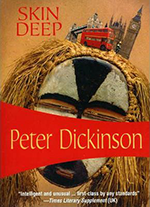
63
1968 – The Glass-Sided Ants’ Nest [aka Skin Deep] by Peter Dickinson. Setting: a New Guinea tribe living in a stretch of London attics. Crime: a murder in the house. Writing: highly imaginative, vivid, inventive, literate, intelligent.
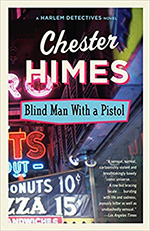
64
1969 – Blind Man with A Pistol [aka Hot Day Hot Night] by Chester Himes. Ex-convict Himes read Hammett and decided, too, to tell it like it is. But with Harlem ‘tecs Coffin Ed and Grave Digger he made it very funny as well, and saw that life is as chancy as that title.
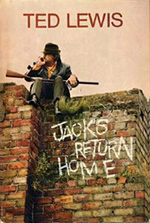
65
1970 – Jack’s Return Home [aka Get Carter] by Ted Lewis. Better known as Get Carter, the rough, relentless and hard-as-nails saga of revenge among British gangsters, which makes the current crop of fashionable Lock, Stock villains look positively tame. The book was set in an unnamed northern town near Doncaster but the legendary film moved the action to Tyneside.
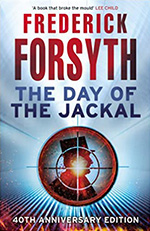
66
1971 – The Day of the Jackal by Frederick Forsyth. The supreme example of the pace of good thriller writing. You know General de Gaulle was not shot by a sniper, but still you read on and halfway through you really think the Jack al is going to do it! And even after the nail-biting climax, there is a wonderful sting in the tail.
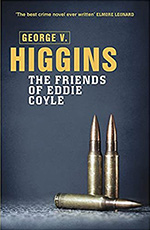
67
1972 – The Friends of Eddie Coyle by George V. Higgins. Higgins had possibly the best ear for dialogue of any crime writer and he wrote it, in a Boston accent, as it sounded. This gave British readers something of a problem but once you get the hang of it, the rhythm takes over and the shady world of car thieves, gun-runners and drug dealers is clinically exposed.
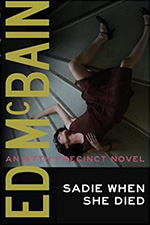
68
1972 – Sadie When She Died by Ed McBain. Probably the best example of the police procedural, set in an unnamed city’s 87th Precinct where multishaped crimes are everyday fare. Readability at maximum.
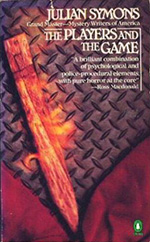
69
1972 – The Players and the Game by Julian Symons. An immensely clever mystery plot supports a grim and credible psychological study of murderous folie a deux. To the serious writer, there should be no subjects barred, Symons once said.
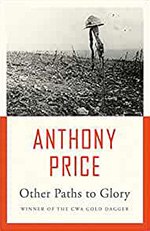
70
1974 – Other Paths to Glory by Anthony Price. The significance of a past event is made to illuminate a contemporary quandary, preferably suspenseful: the Price formula. And how much it pays off when the blood drenched Somme, 1916, threatens a 1970s summit.
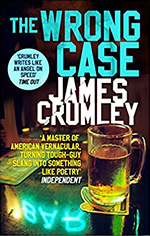
71
1976 – The Wrong Case by James Crumley. If anyone could put a new twist on the traditional private eye novel, it was James Crumley. His hero, Milo Milodragovitch, is a full-time drunk, not averse to experimenting with other, stronger drugs. On the strength of only five novels, Crumley’s hardboiled prose had assured him of cult status.
[Read Adrian Muller’s 1994 interview with James Crumley.]
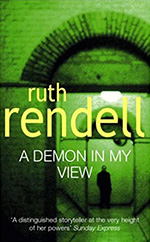
72
1976 – A Demon in My View by Ruth Rendell. Everyone who has read this remembers it with a shiver. For those who have not, suffice it to say that the prim, reserved bachelor Arthur Johnson has something very ghoulish in his cellar.
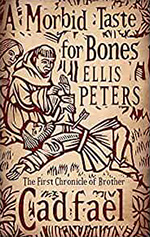
73
1976 – A Morbid Taste for Bones by Ellis Peters. The book which introduced Brother Cadfael, a 12th-century monk at Shrewsbury Abbey who is an exsoldier, a herbalist and no mean detective. Immensely popular and spawned hundreds of lesser imitators in a flood of what the Americans call ‘history mysteries’.
[Peters’ books were adapted as a television series with Derek Jacobi: UK / US.]
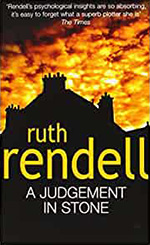
74
1977 – A Judgement in Stone by Ruth Rendell. A classic among chillers. “Eunice Parchman killed the Coverdale family because she could not read.” The first words say it all.
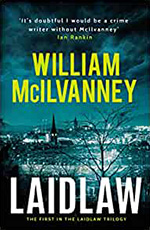
75
1977 – Laidlaw by William McIlvanney. Interaction between the sensitive, observant yet credible detective and a brutally raw Glasgow. A magnificent, multi-layered crime novel.
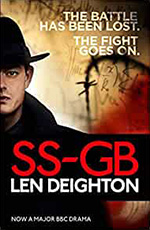
76
1978 – SS-GB by Len Deighton. The ifs of history: Scotland Yard, 1940, after Germany has won. Intelligent, computer-thorough Deighton makes it real, and tells a marching A-to-Z story. A peak of spy writing.
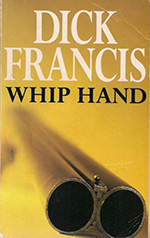
77
1979 – Whip Hand by Dick Francis. Yes, Francis was a champion jockey and, yes, horses feature in his books. But so do humans, and as this tale races onwards you learn about people and, more, how Francis believes we should behave.
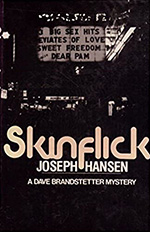
78
1979 – Skinflick by Joseph Hansen. Twenty years ago it wasn’t easy to write straightforwardly about a gay investigator. Hansen did, in classically vivid private-eye style, as Dave Brandsetter, a homosexual without hysteria, solves his case.
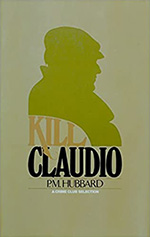
79
1979 – Kill Claudio by P.M. Hubbard. The title repeats Shakespeare’s most chilling line, but the hero here does what he promises, coolly, without fuss and in a thoroughly gentlemanly way. Hubbard believed this was how life should be conducted and, in this book, and his others, calmly lays down the pattern.
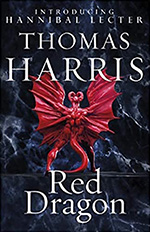
80
1981 – Red Dragon by Thomas Harris. The first appearance of Dr Hannibal Lecter (played by Brian Cox in the film version Manhunter [UK / US]), who must be one of the most famous villains to emerge from 20th-century crime writing. Responsible for thousands of serial-killer thriller copies and, in no small way, for the development of psychological criminal profiling.
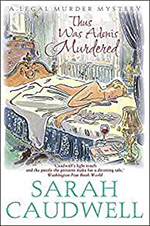
81
1981 – Thus Was Adonis Murdered by Sarah Caudwell. Yes, it’s the dear old whodunnit. But imbued with such poised wit, written in such flawlessly judged prose, flickered over with so many state-of-the-art insights as to become sui generis or perhaps sui subgeneris.
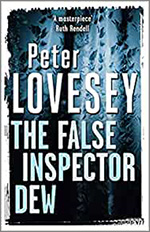
82
1982 – The False Inspector Dew by Peter Lovesey. History mystery pulled whole from the womb of time. Aboard the SS Mauretania, 1921, complex events happen. Legerdemain plotting, forward-driving storytelling.
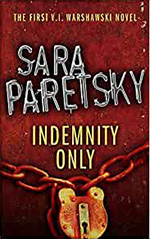
83
1982 – Indemnity Only by Sara Paretsky. The female private eye novel came of age with the appearance of Chicago-based V.I. Warshawski, a cool, self-reliant woman surviving in a man’s world.
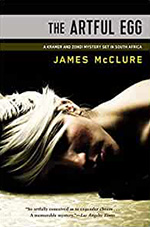
84
1984 – The Artful Egg by James McClure. Over some 14 years, McClure gave the world a perceptively sympathetic portrait of apartheid South Africa to the point where his books were on university reading lists. This final one goes further, showing how our urge to live will prevail.
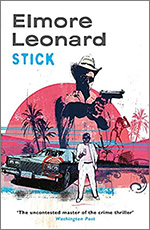
85
1984 – Stick by Elmore Leonard. The book which launched Leonard in Britain and set new standards for streetwise dialogue and realistic characters. No other writer has caught the world of the small-time criminal so well, especially when using settings such as Atlantic City or Detroit. In Get Shorty, he even took on Hollywood.
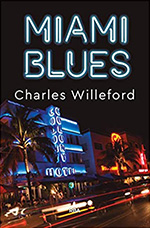
86
1984 – Miami Blues by Charles Willeford. Willeford’s Miami novels featuring homicide detective Hoke Moseley have assured him a place in the history of American hardboiled crime writing. They can also be funny and oddly tender, with the line between good guys and bad guys nicely blurred.
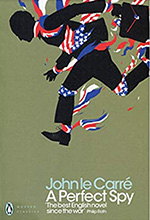
87
1986 – A Perfect Spy by John Le Carré. A perfect study of why young Magnus Pym becomes the perfect spy and an intelligent examination of a father/son relationship. In truth, this is a love story, or a story about love set in a world of intrigue and mistrust, which even surpasses le Carré’s brilliant ‘Smiley’ trilogy.
[Also a BBC mini-series: UK.]
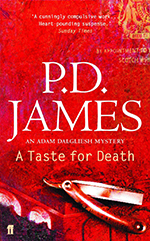
88
1986 – A Taste for Death by P.D. James. Well-clued, suspects-full classical detection, but this literate and humane writer widens the scope by entering the minds and worlds of her characters, seeing them in the light of faith or lost faith. A task far outweighing those everyday mysteries in some religious settings.
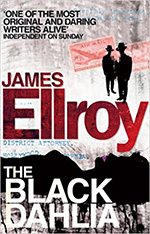
89
1987 – The Black Dahlia by James Ellroy. The first in Ellroy’s exceptional ‘LA Quartet’ which dissects the dark underbelly of Hollywood, racism and police corruption in the late 1940s and early 1950s. Given that Ellroy’s mother was the victim of an unsolved murder there in 1958, you can understand why the writer appears to be possessed by demons.
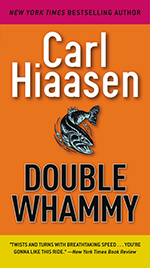
90
1988 – Double Whammy by Carl Hiaasen. The founder of what has become known as the ‘Florida whacko’ school of crime writing, with an outrageous plot involving competitive bass fishing and some seriously deranged characters. Not for those with weak stomachs, but wildly funny.
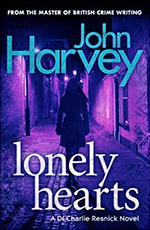
91
1989 – Lonely Hearts by John Harvey. Portrait of a full man, Charlie Resnick, a Nottingham based police detective of Polish background, humane, complicated, obstinate, cat-loving, sandwich-eating, jazz-loving and, above all, believer in justice.
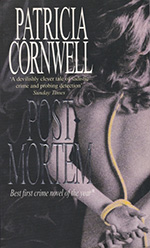
92
1990 – Postmortem by Patricia Cornwell. The bestseller that launched the career of Dr Kay Scarpetta, Medical Examiner of Richmond, Virginia. Subsequent adventures have all been world wide bestsellers, but none have quite matched the impact of her debut and all its gory detail of forensic detection.
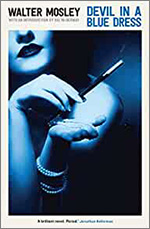
93
1991 – Devil in a Blue Dress by Walter Mosley. The crime novel as social history of a city, Los Angeles, and an oppressed under class, poor blacks in the 1950s. Written with an almost poetic grace, Mosley’s is one of the most distinctive voices to emerge in the past decade.
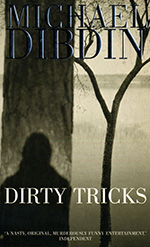
94
1991 – Dirty Tricks by Michael Dibdin. A cynical black comedy set in Oxford at the end of the Thatcher era, where just about everybody gets what they deserve. Dark, amoral and very funny, from one of the UK’s most talented and imaginative writers.
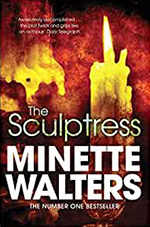
95
1993 – The Sculptress by Minette Walters. The one woman destined to be named the first ‘Queen of Crime’ of the 21st century, and deservedly so. In a direct line of descent from Sayers, James and Rendell. The Sculptress is one her most haunting books, with the most unlikely heroine: an overweight, convicted murderess.
[Also a BBC mini-series: UK.]
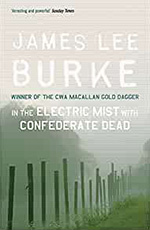
96
1993 – In the Electric Mist with Confederate Dead by James Lee Burke. Apart from coming up with the most outstanding title of the 20th century, Burke is one of the best American writers around, let alone crime writers. Best known for his Dave Robicheaux novels set in the swampy backwaters of southern Louisiana, notable for their exploration of the effect of war and violence on the American psyche, whether the war is the Korean or the American Civil War.
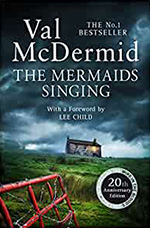
97
1995 – The Mermaids Singing by Val McDermid. Enter, in good hands, the psychological profiler as crime-story pivot, in a finger-tappingly tense story that spares nothing in looking into the depths of human wickedness.
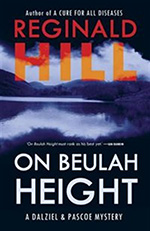
98
1998 – On Beulah Height by Reginald Hill. A big book in every sense, with detecting double Dalziel and Pascoe (old-style copper and sociology graduate) confronting deaths of children, both in the past and present, and looking at them with full gravity, the whole imbued with a poet’s musings on such deaths.
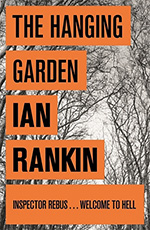
99
1998 – The Hanging Garden by Ian Rankin. Apart from Inspector John Rebus, the main character in Rankin’s books is the city of Edinburgh itself, though it is usually the side the Scottish Tourist Board does not want you to see. Complex, topical and hard as granite, confirming Rankin as the best of his generation of British crime writers.
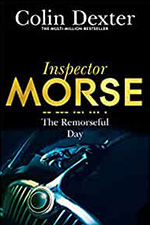
100
1999 – The Remorseful Day by Colin Dexter. As the century faded out, so did Inspector Morse, surely the most popular detective since Sherlock Holmes, his adventures chronicled with sly humour, charm, compassion and fine, clear writing.
[See the television series starring John Thaw as Morse: UK.]
